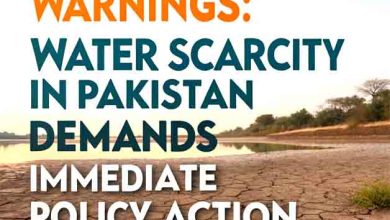Flood prevention methods
#Pakistan estimates the total losses from its recent #floods in 2022 could be as high as $40 billion, affecting millions and killing more than 1,730 since mid-June.
Pakistan has about 145 million acre-feet (#MAF) of #water per annum, out of which, freshwater losses per annum to the sea in the form of floods is about 30MAF, about 15-20 per cent of annual water production in the Indus basin.
#Groundwater accounts for more than half of all irrigation requirements, but there is clear evidence that groundwater is being over-exploited through about more than one million #Tubewells, according to a 2005 World Bank Report.
The cost of installing #tubewells in areas where the water-table depth is more than 24 meters is seven times higher compared to those areas where the water-table depth is around six metres, and the same is true with the increase of energy consumption for groundwater exploitation.
Canals can be constructed to divert floodwaters to rivers that can accommodate surplus flows, increasing groundwater levels as well as irrigable areas
A feasible, sustainable solution is the underground conservation of flood waters of the Indus Basin, improving the quality of water as well as its quantity. Of course, we need floods, monsoons and glacial #meltwater supply because our whole irrigation system depends upon it for irrigation, especially sailaba, or runoff farming, among the oldest forms of irrigated #agriculture.
But Pakistan needs ‘safe’ floods that do not produce disasters downstream. One methodology that can be adopted is to define safer flood peaks at different barrages of all our main rivers and, if needed, go for new barrages.
Floodwater diversion canal sites can be selected with the help of remote sensing geographic information systems using topography, soil strata and geology data. Using the flow of gravity, these sites can divert disastrous flood waters for maximum groundwater water recharge.
On the basis of present and past surface #water data, modelling should be done to divert disastrous flood water optimally from rivers such as Indus and #Chenab to accommodating ones such as #Jhelum, #Ravi, #Satluj, and Beas.
According to the Pakistan Council of Research in Water Resources, as a result of the Indus Water Treaty, Pakistan successfully completed the gigantic project of Indus Basin Replacement Works. It was the biggest irrigation project (Rs124bn) in the world at that time, completed within ten years. Through this project, about 13.75MAF per annum of water is diverted from Pakistan’s western rivers to the eastern ones.
We have to construct groundwater recharging diversion canals. These canal sites should be selected based on flood risks, climate change projections, water storage, ground recharge potentials, and the needs of local communities. Through them, water from disastrous flood-producing western rivers (Indus, Chenab) will be transferred to surplus water-accommodating rivers (Jhelum, Ravi, Sutlej and Beas) to allow groundwater recharge through these diversion canals and new irrigation areas.
If the idea is implemented, the water capacity of more than two Mangla and two Tarbela Dams — about 25-30MAF — can be added annually to the Indus Basin. Furthermore, energy will also be saved because a wastage of water means a waste of energy.
Irrigated land will double, and an improvement in the micro-climate of related areas can also be expected as increased rainfall will produce more food and create more jobs and business activities.
There will be flood disaster reduction that impacts infrastructure, crops, people and animals, along with more drinking water. An increase in employment will lead to less community migration from rural to urban areas. A higher quantum of food and fish production will increase exports. There will be more avenues to transport goods through the new canal waterway navigation system.
Cities and towns can also develop along the diversion canals if more water is available to reduce the burden on existing urban areas.
Water can be stored in the aquifers, which would help during droughts. In addition, the canals can stabilise or even raise water tables, thus reducing the cost of the construction of wells and their energy costs.
There will be a reduction of water losses through evaporation, a decrease in seawater intrusion along the coastal areas, and an improvement of the environmental base flows in streams and rivers, even during dry periods.
The writer is a former advisor to the rector of COMSATS University Islamabad.







